The history of handbags is closely tied up with the roles of men and women throughout history. While current culture assumes a woman will carry a purse or handbag, that was not always so. For centuries both men and women carried drawstring bags or pouches worn at the waist to carry necessities.
With the introduction of pockets in menswear in the sixteenth century, there was a shift. Men’s clothing began to include pockets while women’s clothing did not. Women began to create pockets that were hidden underneath their skirts and worn around the waist with ties. Here they could carry their necessities without the items being seen. Interestingly, this created a feminist issue for some as it was seen as a step toward inequality between men and women.
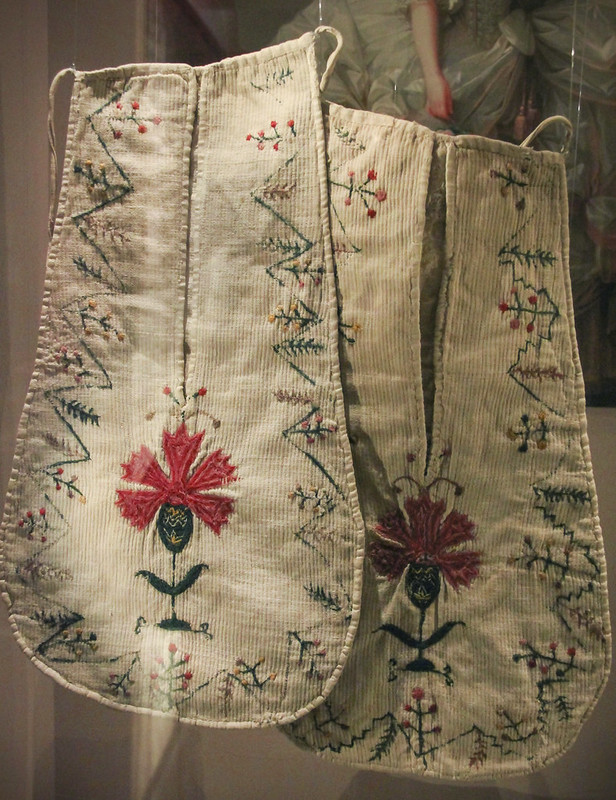
As fashions changed and women’s dresses became more fitted, the idea of hiding a pocket within one’s skirt was no longer viable. The reticule or indispensable was born. It was a bag meant to be worn tied at the waist and no longer concealed. This caused quite an uproar as a woman’s pocket was considered an undergarment and bringing them out in full view was thought to be vulgar. The lowly reticule became decorative to appease those offended by its sight, and became a fashion accessory as a practical way to carry money, cosmetics, and other necessary items.
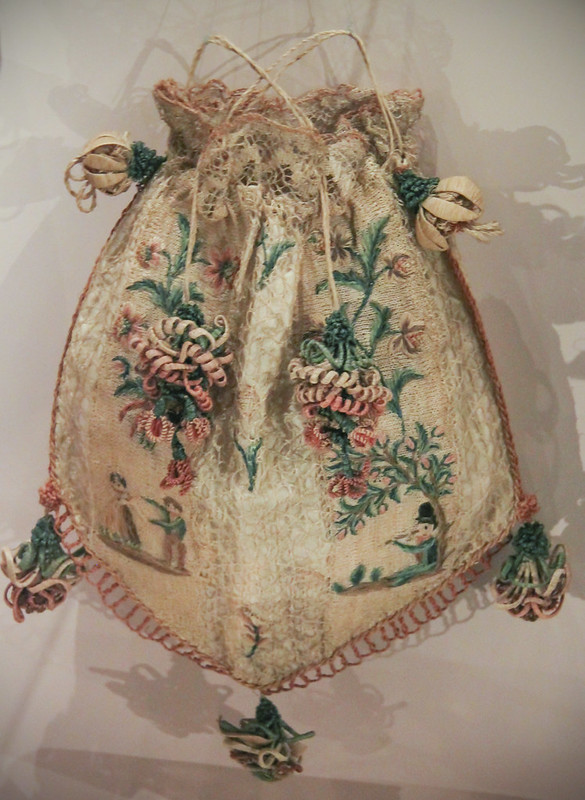
Many women sewed their own reticules and decorated them with embroidery, beading, and lace. The end of the 19th century brought about the industrial age, getting more women out of the home for longer periods of time. Women began to carry more items with them throughout the day and required something a bit larger and more sturdy than the drawstring fabric reticule.
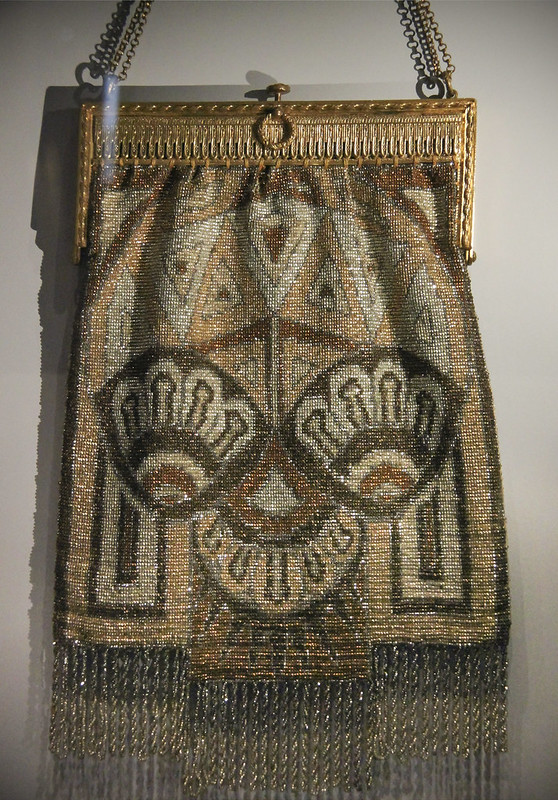
Metal frames with clasps that easily closed allowed those drawstring bags to become purses, with chains that could be included in a chatelaine worn around the waist and containing all of the necessities of the day. As time went on, purses grew in size and the chains became handles that could be carried in hand so as to not deter from the style of a women’s dress. Well-to-do ladies of the day could afford highly decorated purses while the middle class was able to purchase frames and patterns to create their own bags with whatever scrap fabric or yarn they may have available.
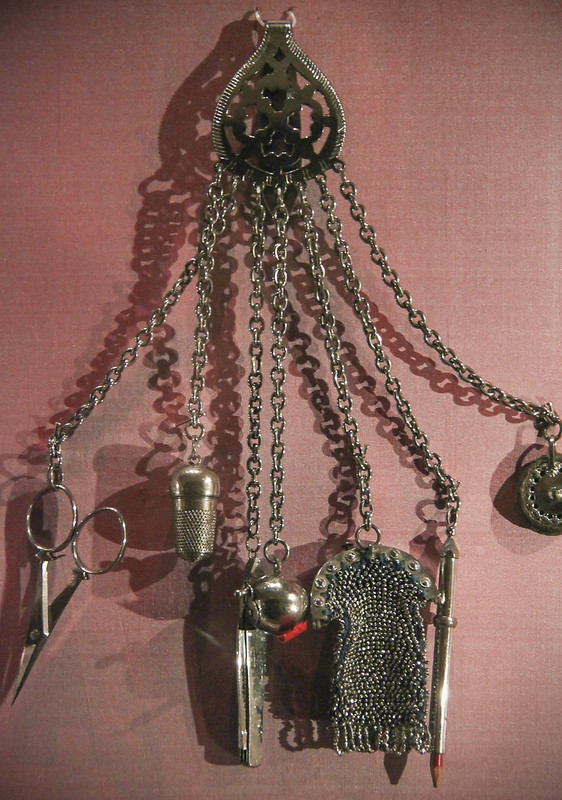
With the rise of fashion in Paris during the turn of the century, fashion designers of the day were turning out incredibly detailed embroidered and beaded bags as well as newly created mesh metal bags. Many of these decorative bags were quite small and made to be worn on a single finger with a ring reminiscent of those worn throughout high society in Europe in the 17th and 18th centuries. They were an accessory to an outfit worn out on the town or to a ball. Not meant to hold more than a calling card and small compact.
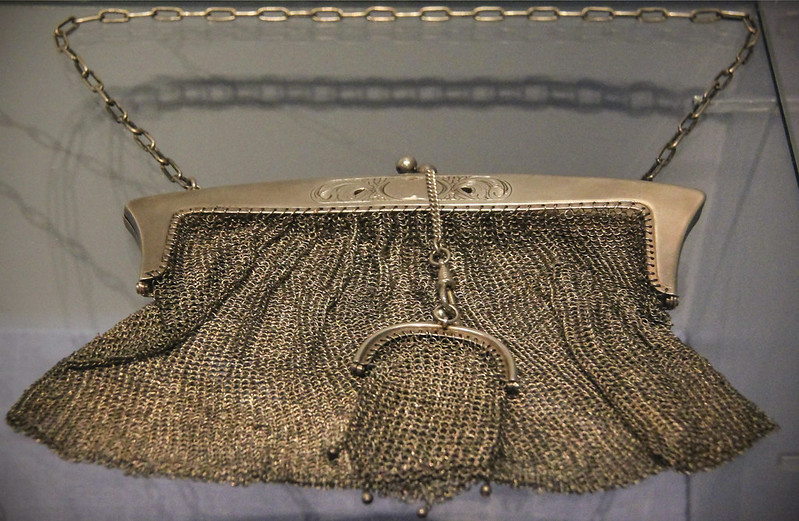
As time moved forward and women grew more independent they began to carry larger purses and handbags in order to accommodate the many items required to conduct daily life.
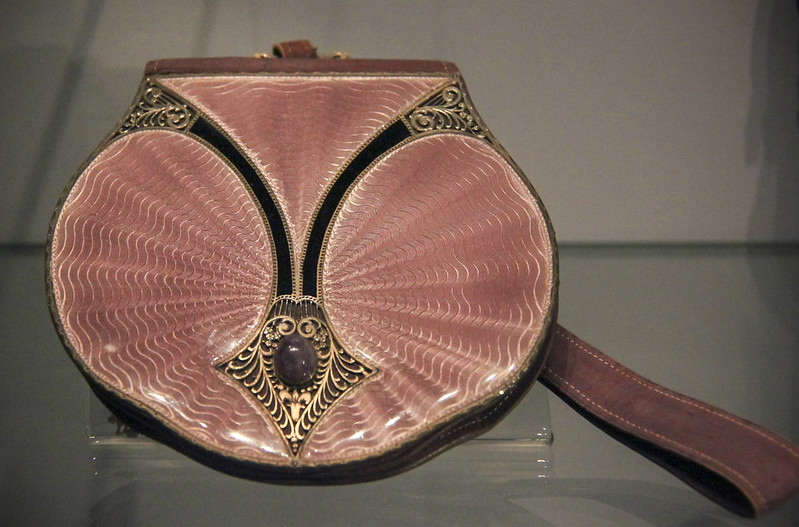
This article from the Women’s Museum of California is an interesting in-depth look at the history of handbags. Sadly now closed, Amsterdam had its very own Museum of Bags and Purses. You can read about it on Wikipedia here and see photos from the museum here on Flickr.
Note: All photos in this article are courtesy of Kotomi on Flickr from the Amsterdam Museum of Bags and Purses.
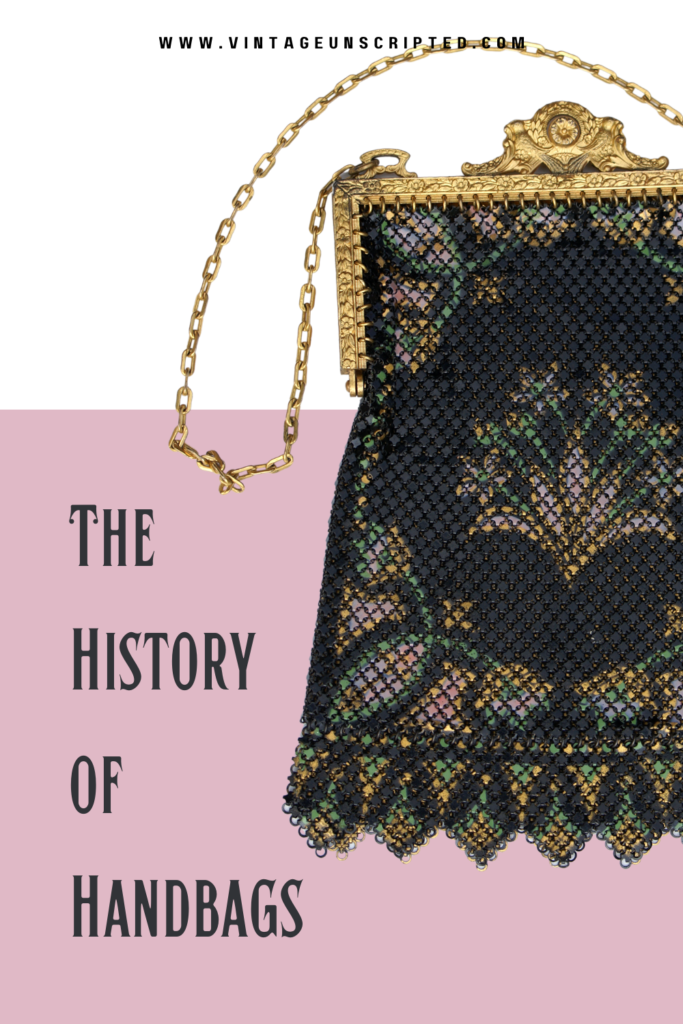

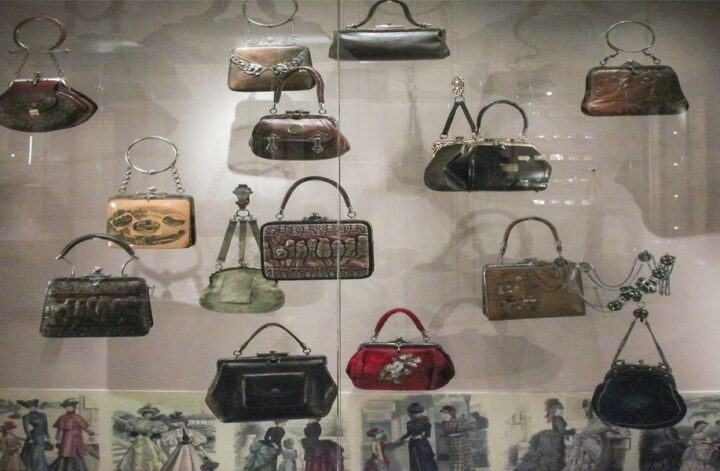

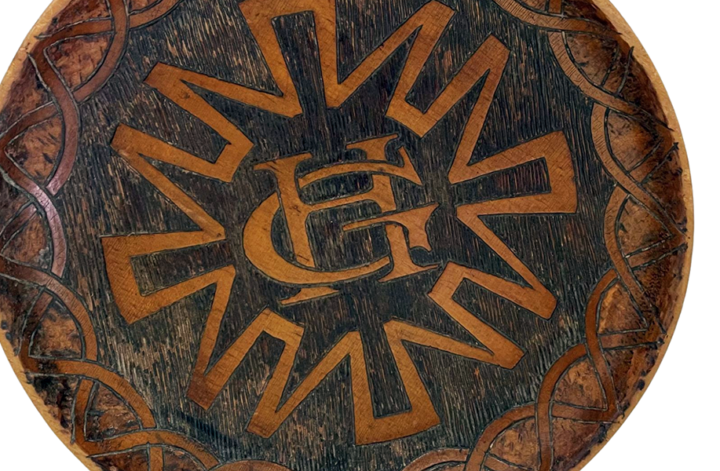
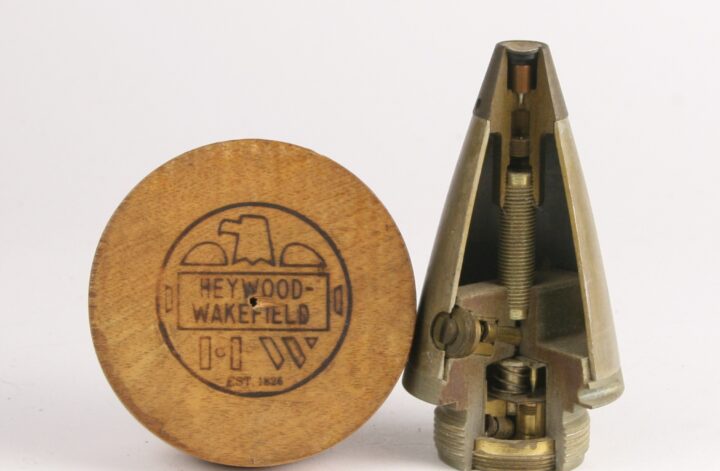

5 comments
This is a wonderful history of handbags! Thank you for writing this article! I particularly love the mesh bags , by Whiting and Davis, They never tarnish! I love all kinds of bags, depending on what I am wearing. The old beaded bags are amazing and the embroidered ones are too! I love your blog!
Thank you, Linda! They are truly fascinating, with an endless amount of creativity. So glad you enjoy the blog. We appreciate hearing when people enjoy what we write.
I thoroughly enjoyed your post, Pam. Little did I know that handbags were a window into history. Thanks for educating me.
Awe, thanks so much Linda, you started me down this road. It was a very fun journey. Glad you learned something along the way too.
What a great dive into purse history. I always enjoy learning about the functional articles of clothing and fashion. I did not know that pockets hidden in skirts were so humble and hidden philosophically as an intimate piece. Very interesting!